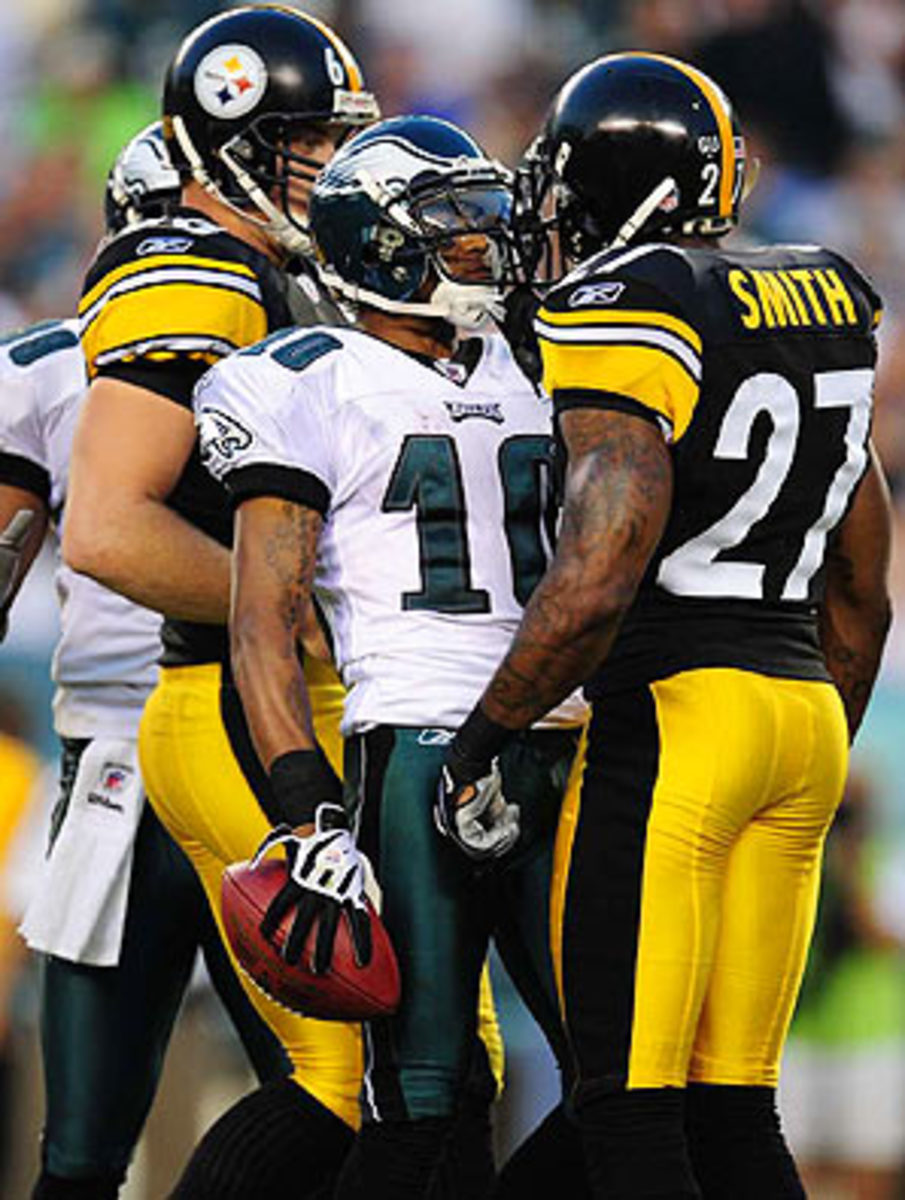Small wonder: Success of rookie wide receivers trending downward
Teams are constantly trying to find such players, which is why in the first round of this year's draft the Raiders, 49ers, Giants and Titans took Darius Heyward-Bey, Michael Crabtree, Hakeem Nicks and Kenny Britt,respectively. Each is at least 6-foot-1 and all are over 210 pounds, so they fit the mold. But is bigger necessarily better when it comes to getting immediate production from these players? Recent history suggests otherwise.
Though there were no wide receivers taken in the first round in 2008, 10 went in Round 2, and a quick look at their first-year statistics paints an interesting picture. The success among the smaller guys was led by 5-10, 182-pound Eddie Royal of Denver, who embarrassed then-Oakland cornerback DeAngelo Hall in the season opener on Monday Night Football to the tune of nine catches for 146 yards and a touchdown. That was just the opening salvo in a season that saw Royal finish with 91 catches for 980 yards in 15 games.
Philadelphia's DeSean Jackson is another example of a small receiver having a big impact as a rookie. At 5-10, 175, he finished with 62 catches for 912 yards, but only two touchdowns. Even the surprise first receiver taken in 2008, 5-11, 184-pound Donnie Avery of St. Louis, had a stellar debut. He had 53 catches for 674 yards and three touchdowns, not too shabby for a 'rook.'
What about the big boys? They had virtually no impact. The biggest of the bunch, Buffalo's James Hardy (6-5, 212) and Pittsburgh's Limas Sweed (6-4, 220), were non-factors for their franchises. Washington's duo of Devin Thomas (6-2, 220) and Malcolm Kelly (6-4, 227) were doubly disappointing in their first seasons. Of the big wide receivers, Jordy Nelson (6-3, 217) of Green Bay had the best numbers, with just 33 catches for 366 yards.
So, what gives?
"I really don't know," said Royal when asked about the discrepancy between big and small. "I think we were fortunate to be in good situations with good offenses."
There is some truth to that sentiment given that Royal and Jackson caught balls from Jay Cutler and Donovan McNabb, respectively. But the Rams didn't have a very good offense and that didn't slow down Avery. Sweed, meanwhile, played for the Super Bowl champion Steelers and still managed only six catches from Ben Roethlisberger.
None of the receivers I spoke with had a good explanation, so I asked somebody on the other side of the ball, someone who has to cover these guys for a living -- Bills cornerback Terrence McGee. "Royal and Jackson are quick and fast and it is hard to stay with them in open space," he said. "For the most part it is harder for me to go against the shiftier, quicker guys. I can't even get a hand on [them] sometimes. The bigger guys usually just try to muscle you."
One school of thought, piggybacking off what gives McGee problems, is that it takes bigger receivers longer to learn how to fight off the jam at the line of scrimmage, whereas smaller guys use their quicks, which is more natural for a rookie or young player.
Don't get me wrong. I'm not trying to intimate that the era of the dominant man-child receiver is over. Not even close. In fact, Arizona's Larry Fitzgerald (6-3, 220) and Houston's Andre Johnson (6-3, 223) are clearly the two best receivers in the world right now and both look like Tarzan and play like him. Maybe with the recent crop of rookie receivers it will simply take the more physically imposing guys longer to get their careers started and the smaller guys will find they have a ceiling and are somewhat limited as a result of their stature. It's possible.
But there has to be something to this when it comes to rookie wideouts in the modern NFL making an impact. What is that expression again? Once (Royal) is an accident, twice (Jackson) is a coincidence, but three (Avery) times is a trend. It certainly seems to be the case based on last season, especially when you consider how little their oversized counterparts did.
What does all this mean for this year's rookies? I would keep my eyes on Minnesota's Percy Harvin (5-11, 192) and Philadelphia's Jeremy Maclin (6-0, 198). Though neither guy is as small as Royal, Jackson or Avery, they also aren't your standard physical specimens either. Most reports indicate both of those guys are already lighting it up in spring workouts while their bigger counterparts Heyward-Bey and Crabtree have been limited by injuries and are behind the eight-ball at the moment.
Given last year's trend among second-rounders, maybe this big vs. small debate is not just limited to the big-money picks. It will be interesting to see how undersized 2009 third-rounders like Seattle's Deon Butler (5-10, 182) and New England's Brandon Tate (6-1, 195) stack up in terms of production versus the likes of monster ball-catchers like the Giants' Ramses Barden (6-6, 229) and Miami's Patrick Turner (6-5, 223). Based upon recent precedent, my money is on the little guys.





